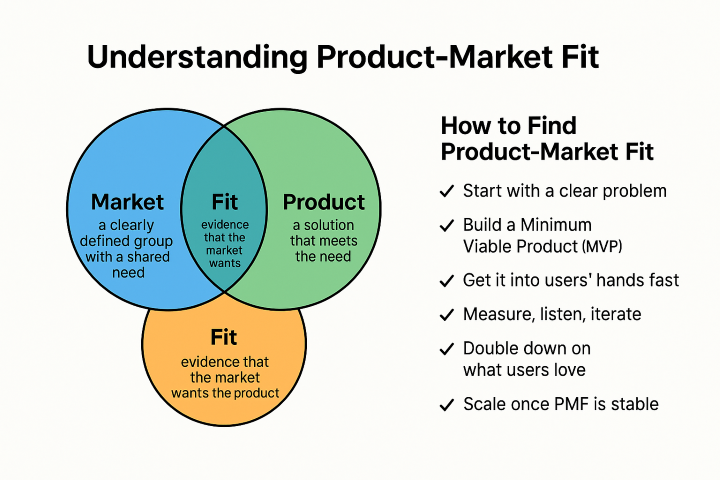Cap Table:
What it is: A spreadsheet that shows who owns how much of the company.
Why it matters: It helps keep track of all shareholders and their ownership percentages, which is important for understanding the control and distribution of profits.
Dilution:
What it is: When more shares are issued, existing shareholders own a smaller piece of the company.
Why it matters: Each time you raise money by issuing new shares, your ownership percentage decreases, but ideally, the value of the company increases.
ESOP (Employee Share Option Plan):
What it is: A way to give employees shares in the company as part of their compensation.
Why it matters: It helps attract and retain employees by making them part-owners, which can motivate them to work harder for the company’s success.
Vesting Period/Cliff:
What it is: The time employees need to wait before they own their stock options. A ‘cliff’ is an initial period before any options vest.
Why it matters: It ensures employees stay with the company for a certain time before benefiting from stock options, which helps with retention.
Pre-Money:
What it is: The value of your company before you get new investment.
Why it matters: It helps investors determine how much ownership they should get in exchange for their investment.
Post-Money:
What it is: The value of your company after getting new investment.
Why it matters: It includes the new investment and is used to calculate the new ownership percentages.
GP (General Partner):
What it is: The managers of a venture capital fund who make investment decisions.
Why it matters: They decide how to invest the money from the fund to try to get good returns for the investors.
LP (Limited Partner):
What it is: The investors in a venture capital fund who provide the money but do not make decisions.
Why it matters: They trust the GPs to manage their money and earn returns on their investment.
Fund of Funds:
What it is: A fund that invests in other investment funds rather than directly in startups.
Why it matters: It provides diversification and access to a range of investment opportunities managed by different funds.
Capital Call:
What it is: When investors are asked to contribute their promised money to the fund.
Why it matters: It ensures the fund has money available when needed to invest in opportunities without holding idle cash.
Subscription:
What it is: The commitment of an investor to provide money to a startup or fund.
Why it matters: It formalizes the investor’s intention to invest, usually governed by a legal agreement.
Follow-On:
What it is: When an existing investor puts more money into the company in a later investment round.
Why it matters: It shows confidence in the company’s progress and provides additional funding.
Carry:
What it is: The share of profits that the fund managers (GPs) take as an incentive.
Why it matters: It aligns the interests of the GPs with the investors because GPs benefit when the fund performs well.
DPI (Distributions to Paid in Capital):
What it is: The ratio of money returned to investors compared to the money they invested.
Why it matters: It measures how much investors have gotten back relative to their investment, indicating fund performance.
MOIC (Multiple on Invested Capital):
What it is: The total return on an investment relative to the amount invested.
Why it matters: It helps investors understand how much value has been created from their investment.
TVPI (Total Value to Paid in Capital):
What it is: The total value of a fund’s investments compared to the total money invested by the LPs.
Why it matters: It gives an overall measure of the fund’s performance, including both realized and unrealized returns.
IRR (Internal Rate of Return):
What it is: The annual growth rate of an investment over time.
Why it matters: It helps compare the profitability of different investments by calculating the rate at which the investment grows annually.
SAFE (Simple Agreement for Future Equity):
What it is: A contract that gives investors the right to buy shares in the future at a set price or discount.
Why it matters: It simplifies early stage fundraising by deferring the valuation decision until a later funding round.
Convertible Note:
What it is: A loan that converts into shares at a future date or event.
Why it matters: It provides flexibility for startups to raise funds without immediately valuing the company.
Preference:
What it is: Special rights given to certain investors during a liquidity event, such as a sale.
Why it matters: It ensures those investors get paid back before others, reducing their risk.
Antidilution:
What it is: A protection mechanism that adjusts the share price for early investors if a new round of funding is at a lower valuation.
Why it matters: It protects early investors from losing value if the company raises money at a lower valuation later on.
Pay-to-Play:
What it is: A rule that requires investors to participate in future funding rounds or lose certain rights.
Why it matters: It encourages investors to continue supporting the company financially in subsequent rounds.
Drag Along:
What it is: A clause that allows majority shareholders to force minority shareholders to join in the sale of the company.
Why it matters: It ensures that a majority decision to sell the company can proceed smoothly without minority shareholders blocking the sale.
Tag Along:
What it is: A clause that allows minority shareholders to join in the sale of shares by majority shareholders.
Why it matters: It protects minority shareholders by ensuring they can sell their shares on the same terms as majority shareholders.





